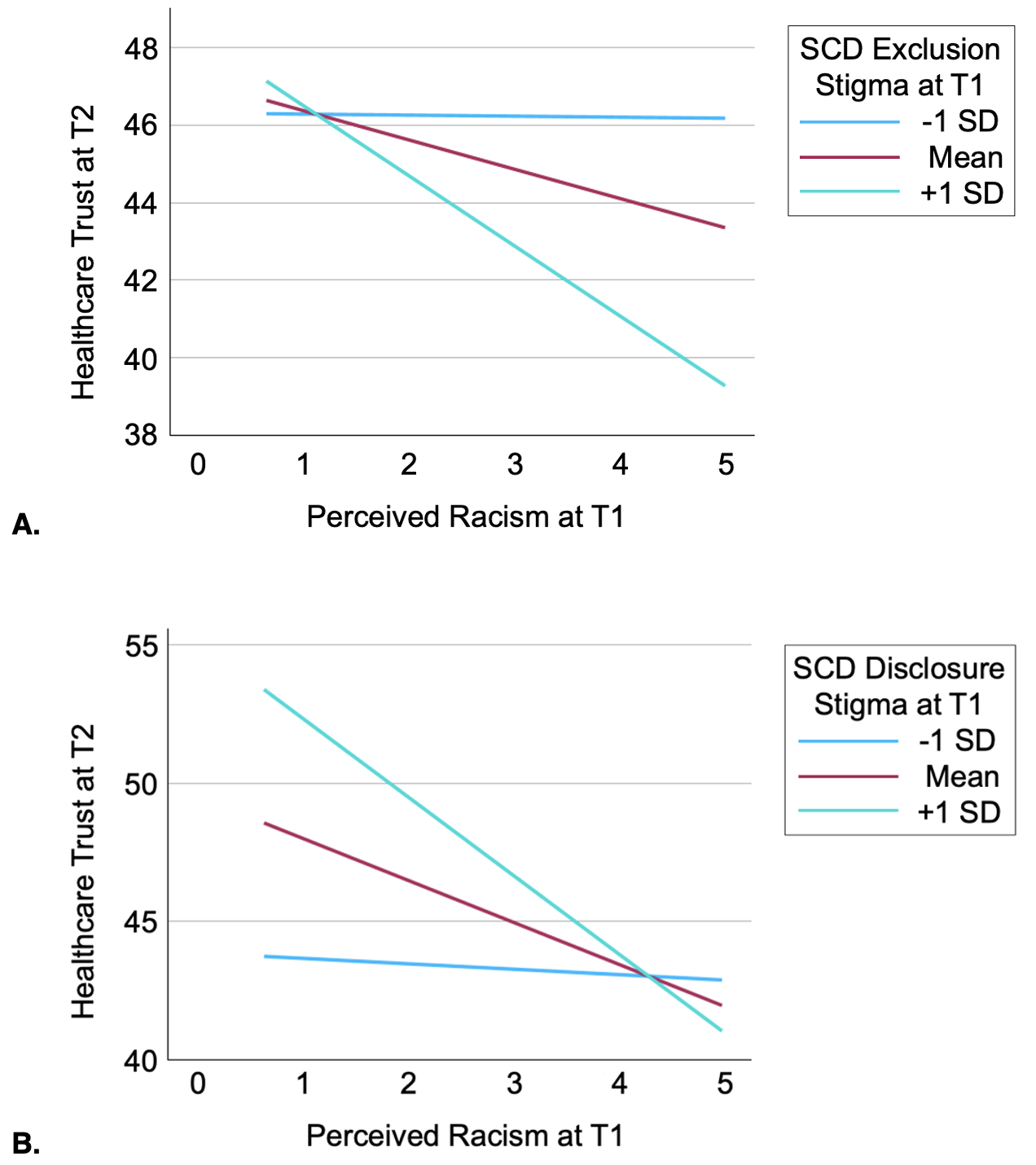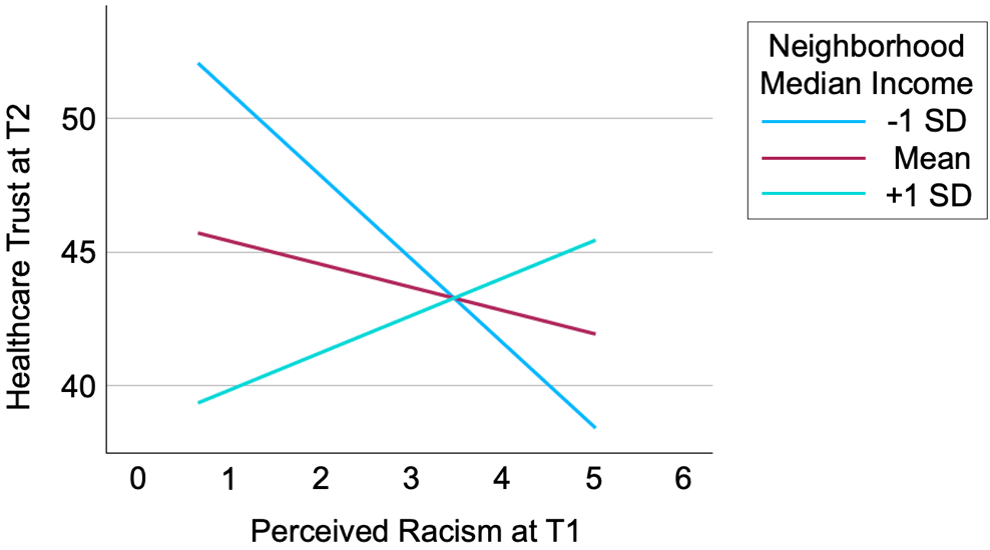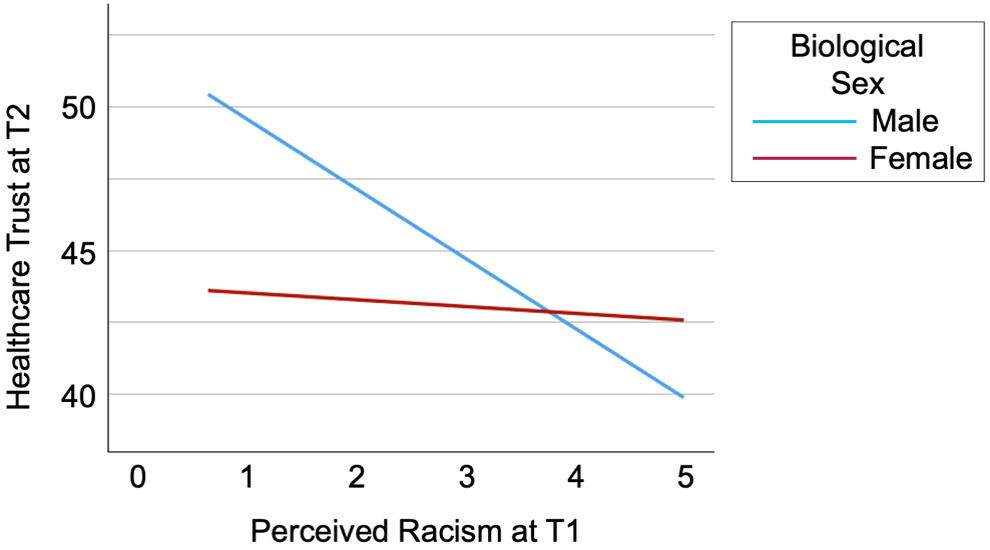Hematology/Oncology 2: Pediatric Hematology
Session: Hematology/Oncology 2: Pediatric Hematology
114 - Perceived Racism and Healthcare Trust Among Adolescents and Young Adults with Sickle Cell Disease
Saturday, April 26, 2025
2:30pm - 4:45pm HST
Publication Number: 114.6383
Kemar V.. Prussien, Children's Hospital of Philadelphia, Philadelphia, PA, United States; Margaret Mary Burke, CHOP, Philadelphia, PA, United States; Lori E. Crosby, CCHMC, Cincinnati, OH, United States; Alexis Thompson, Children's Hospital of Philadelphia, Philadelphia, PA, United States; Lisa Schwartz, Childrens Hospital of Philadelphia, Phladelphia, PA, United States

Kemar V. Prussien, PhD (she/her/hers)
Assistant Professor
Children's Hospital of Philadelphia
Philadelphia, Pennsylvania, United States
Presenting Author(s)
Background: When Black and African American patients experience racism, their trust in the healthcare system diminishes and health outcomes worsen. Qualitative research with adolescents and young adults (AYA) with sickle cell disease (SCD), a genetic condition predominantly affecting individuals of African descent, suggest that the negative impact of racism on healthcare trust is intensified in this group due to the additional stigma associated with SCD.
Objective: This study aimed to quantitatively examine the prospective relationship between patient perceived racism and healthcare trust among AYA with SCD and examine effect modifiers.
Design/Methods: AYA with SCD ages 16 to 25 were recruited for a prospective, 3-month study. Forty-nine AYA completed a baseline survey (T1), and 44 AYA completed a follow-up survey 3 months later (T2; Meanage = 19.5, 45.5% female sex). Measures included the Perceptions of Racism in Children and Youth as the exposure, the Health Care Relationship Trust Scale as the outcome, and the SCD Stigma Scale as the effect modifier. Participant census tract-level median neighborhood income, age, and biological sex were also investigated as additional modifiers. Associations were examined using Pearson correlations and multivariate linear regression analyses.
Results: Bivariate correlations showed that higher perceived racism at baseline was related to lower healthcare trust 3 months later (r = -.38, p =.012). Findings from a multivariate linear regression showed that perceived racism at T1 remained a significant predictor of healthcare trust at T2 when controlling for age, gender, and trust at baseline (β = -.28, p = .030). Additionally, linear regressions including effect modifiers revealed significant interaction effects between perceived racism with SCD exclusion and disclosure stigma (Figure 1a/b), neighborhood income (Figure 2), and biological sex (Figure 3). Specifically, the prospective association between perceived racism at T1 and healthcare trust at T2 was strongest among AYA who reported high levels of disease stigma, lived in lower income neighborhoods, and were male. No interaction effect was found for age.
Conclusion(s): AYA with SCD who reported greater perceived racism later experienced lower healthcare trust, and this association is strongest for AYA who experience high disease stigma, are male, and live in low-income neighborhoods. Thus, interventions to improve patient trust should feature multilevel components to reduce structural and interpersonal systems of power that have intersectional effects on AYA with SCD.
Figure 1.
 A. Line graph of the interaction between perceived racism and SCD exclusion stigma predicting healthcare trust. Simple slopes are depicted for AYA 1 SD below the mean reported exclusion stigma level (B = -.03, p = .974), at the mean reported exclusion stigma level (B = -.74, p = .236), and 1 SD above the mean exclusion stigma level (B = -1.80, p = .009). B. Line graph of the interaction between perceived racism and SCD disclosure stigma predicting healthcare trust. Simple slopes are depicted for AYA 1 SD below the mean reported disclosure stigma level (B = -.20, p = .834), at the mean reported disclosure stigma level (B = -1.51, p = .018), and 1 SD above the mean disclosure stigma level (B = -2.83, p < .001).
A. Line graph of the interaction between perceived racism and SCD exclusion stigma predicting healthcare trust. Simple slopes are depicted for AYA 1 SD below the mean reported exclusion stigma level (B = -.03, p = .974), at the mean reported exclusion stigma level (B = -.74, p = .236), and 1 SD above the mean exclusion stigma level (B = -1.80, p = .009). B. Line graph of the interaction between perceived racism and SCD disclosure stigma predicting healthcare trust. Simple slopes are depicted for AYA 1 SD below the mean reported disclosure stigma level (B = -.20, p = .834), at the mean reported disclosure stigma level (B = -1.51, p = .018), and 1 SD above the mean disclosure stigma level (B = -2.83, p < .001).Figure 2.
 Line graph of the interaction between perceived racism and neighborhood median income predicting healthcare trust. Simple slopes are depicted for AYA 1 SD below the mean neighborhood median income (B = -3.11, p < .001), at the mean neighborhood median income (B = -.86, p = .135), and 1 SD above the mean neighborhood median income (B = 1.39, p = .192).
Line graph of the interaction between perceived racism and neighborhood median income predicting healthcare trust. Simple slopes are depicted for AYA 1 SD below the mean neighborhood median income (B = -3.11, p < .001), at the mean neighborhood median income (B = -.86, p = .135), and 1 SD above the mean neighborhood median income (B = 1.39, p = .192).Figure 3.
 Line graph of the interaction between perceived racism and biological sex predicting healthcare trust. Simple slopes are depicted for male AYA (B = -2.42, p = .002) and female AYA (B = .24, p = .792).
Line graph of the interaction between perceived racism and biological sex predicting healthcare trust. Simple slopes are depicted for male AYA (B = -2.42, p = .002) and female AYA (B = .24, p = .792).
